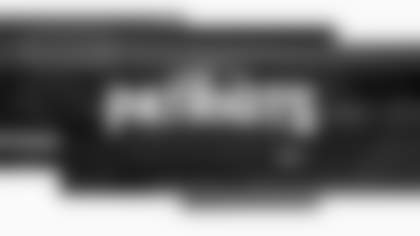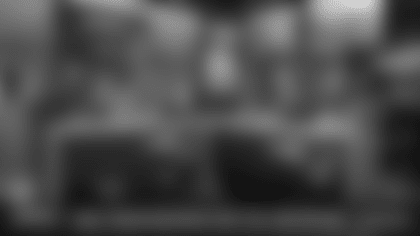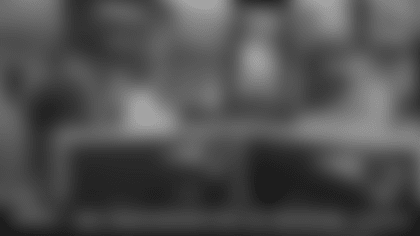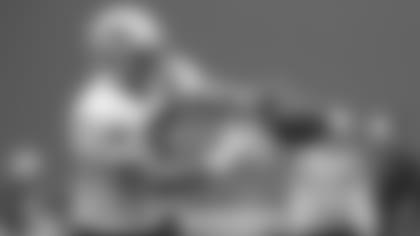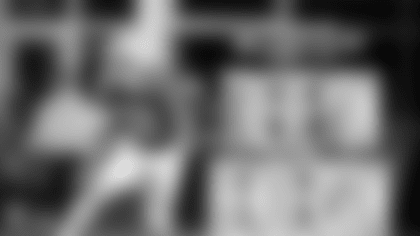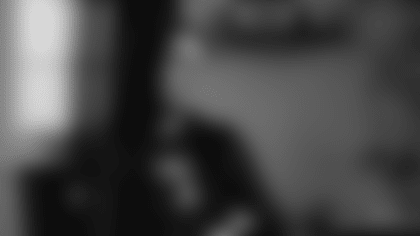New England Patriots head coach Bill Belichick addresses the media during his press conference at Gillette Stadium on Sunday, August 16, 2009.
BB: So we're rolling into another week of camp here. As I said after the game, it was good to have the game experience that we had down in Philadelphia. We learned a lot about playing our techniques at full speed and playing at game speed. The contact part of the game, [it] was certainly good to get off on the right foot on that. We had some situations come up that we were able to learn from and talk about. We'll keep building on that as we head into this week against Cincinnati. There will be some new emphasis points scheme-wise and also fundamentally. Some of the things we feel like we got in, we'll build on those and work in some counter and companion moves that go with them. We just want to try to keep progressing as a football team both individually and in groups, and also from a team standpoint on situations and things like that. It's a big week for us. I think we have a good opportunity here to really take some steps forward in the development of our team. We need to take advantage of that and we will really start pushing on to Cincinnati in the next couple of days and hopefully be able to play competitively against the Bengals on Thursday.
Q: Can you tell us what you think will happen with the Wild Cat around the league this year. You were the first team to see it and the first team to have to defend it. Is it going to be a one-hit wonder or is it going to adapt and survive this year?
BB: Well, I don't think any of us know the answer to that question. I am sure each team … Last year, we kind of saw a lot of teams have their own little version of it or a play or two from it. I'm sure that there are several teams that are working on it more extensively in camp behind closed doors, so to speak, and will not unveil it until the regular season starts. So we'll have to … It's a little bit of defending the unknown. I think all the defenses are going to have to work against it and have some plan for how to deal with it. But there are so many different versions of how to run it, like we saw last year. Each team has its own kind of unique plan with it or player that they're working with. I don't know if you know exactly what you're getting until you get a chance to see it during [the] regular season and scout it a little bit. It will be interesting to see how all that develops. I think to run that kind of offense you have to commit some time to it and you can commit some time to it in training camp where you have more of it. I think it's a little bit harder to commit that time during the regular season so depending on how much you do in preseason that might tell us a little bit about what teams are going to do during the regular season, once it's kind of unveiled.
Q: How much, if any, does Jerod Mayo's role change whether you're playing in a 4-3 or 3-4?
BB: Well, all of our players in the front seven play with the same techniques regardless of what the front is. We still fundamentally do the same thing. Depending on what the call is, their reads change and their responsibilities change as far as coverage, dealing with blockers, recognizing their blocking schemes and things like that. There are some adjustments when players play different alignments. But the fundamentals of those positions, basically, we try to keep those the same so we're not changing the techniques.
Q: I noticed Jerod Mayo was wearing the green dot against Philadelphia. Other than him being out there so often, what makes him a good candidate to wear it?
BB: Well, he's in the middle of the defense. He has to make a lot of our defensive calls anyway just because of his locations, just like the quarterback does on the other side of the ball. That's really what it centers around. Middle linebackers and safeties, from an alignment standpoint, are in the best position to make those calls and - as we talked about last year - you want to have the ability to communicate with somebody who's going to be out there a lot so that's another factor. But no matter how you cut it, I think there's still going to be signaling involved defensively. I don't see any way around that unless you had a real set of starters in an alignment where everything fit perfectly and you never had to do it. But I have a hard time picturing that.
Q: I know quarterbacks get a chance to test the communication system during training camp. Can Jerod Mayo work on that during camp?
BB: He can, but because of the way it's set up, you can't have them both going at the same time. We do it, but it's not totally a situation that you can kind of do it whenever you want because one does affect the other in a practice situation. When you're in the game, we wouldn't be using them at the same time, but in practice we would.
Q: [On the importance of rushing the ball this season and how it will be monitored.]
BB: We set our offensive and defensive strategy in game plans week to week based on who we're facing. Our offensive strategy is to score points. Our defensive strategy is not to allow them and whatever that entails and whatever is the best way to do that, that's what we try to do. I can't imagine that changing.
Q: Can you talk about the impact of the rookies, Pat Chung and how he did and Julian Edelman's punt return?
BB: Well, yeah, you always like to see young players take the coaching, the opportunities they have in practice and be able to transfer those into game situations and have some success. I think all of our rookies that played, they all showed some good things. They all had plays that were positive and they also had things that showed they have a lot of work to do and a lot of things they could have and probably should have handled better than they did. So that's part of the learning experience. It's the first NFL game, even though it wasn't regular season. It's still an NFL game for them and that was a good experience. Everybody's got to have their first one and get it under their belt so our players did that. But I hope in every case, really, they can improve on that and build on it, certainly this week and then on a weekly basis and take those experiences and make them better the next time. I think they all have a lot of room for improvement.
Q: Is this generally the time where you see a spike in improvement from the rookie players now that they have a game under their belt?
BB: Sometimes you do [and] sometimes you don't. I think that's a question you can't really answer until you see it. Some players start slow and rise fast. Other players start fast and level out. Some players are kind of up and down - sometimes you get a real good performance, sometimes you get one that's not as steady. Until you have enough history with a player and have enough experience and really try to see that graph … Sometimes it's about matchups. Some matchups are favorable to a player and other matchups aren't favorable. Sometimes it depends on what those matchups are in a game. We all learn from experience, but I don't think there's necessarily a correlation between performances week to week, especially with young players at this point in time because the other players are improving, too. The other players they're playing against are improving, too. The real question is: Can we improve faster than our competition as a team and individually? That's really what it comes down to.
Q: Myron Pryor is another guy that caught a lot of people's eyes in the first game. What have you felt about his development so far?
BB: I think he's had his moments. He's done things that were good. He's playing in a new type of defense. I think he was well-coached fundamentally at Kentucky under Coach [Rich] Brooks, who's a very good defensive coach, very good defensive line coach. So I think that he had the benefit of good coaching in college. But it was under a different scheme and his responsibilities … Certainly, the level of competition was a little different than what it is here. But nevertheless, I think he's taken that base and been able to build off it and make a lot of improvement in a number of areas, but still there are some new things to him and some of those things he's picked up quicker than others. [He's] making progress. I'm glad we have him. I think he's worked hard. He's got a long way to go.
Q: [On the difference between coaching a 3-4 and a 4-3 and the toughest part of coaching a 4-3.]
BB: It depends on what they've [the players] done, what they know, what they're used to playing. Usually, it's something different than what they're accustomed to doing. You don't really know where everybody's come from. Some guys, you tell them to do something and that's pretty similar to what they've done in the past and that's not too hard for them. Other guys, you ask them to do something and it's a little different than what they've done in the past and sometimes it takes them awhile to adjust to that. It's an individual thing. It would be a specific thing. What's hard for one player might not be hard for another and what's easy for one guy might be hard for somebody else, kind of like it is for all of us when we are doing something new.
Q: What's your assessment of the snapping? How challenging is it in that competition with such a small sample size to assess when you're making the decision in that competition?
BB: I think that's a good question and a hard question to answer. [It's] no different if you were evaluating a kicker, or a punter, or whatever, that only had the same number of opportunities. So I think a lot of things have to weigh into it; again, the players overall consistency - we've had hundreds of snaps out there and kicks; the player's production in practice settings; his rate of improvement and then his performance in games. All those factor into it and, again, sometimes it can change. I remember sitting in this room a couple weeks ago answering a question about [Julian] Edelman not being able to catch punts. I'd be surprised if anybody asked that question today so I don't know. We'll have to see. But when you have a small sample in games, like you said, fortunately, we have a bigger sample, including practice situations so all that has to be taken into account and it's not, certainly, inexact.
Q: How is that competition going right now?
BB: I think both players are capable of doing the job. Who would be better at it? That may depend on what you're talking about because you're talking about punts, protection, punt snapping and protection, coverage, field goal snapping and protection. So depending on which one of those areas you want to talk about there may be a different ranking of the players and those rankings could change over the next few days, few weeks. But I think it's competitive and I think we're working with players that are capable of doing it. We'll just see how that turns out.
Q: Would you mind stating the obvious and tell me how much Julian Edelman has improved in that short amount of time and how much commitment it takes for a young player to go out there and correct something that he shows up as a little deficient to start with to the point where he looks great now?
BB: Well, I certainly wouldn't use that adjective. Catching punts, there's a lot to it. Unlike kickoffs - where the ball usually tumbles end over end and the movement on the ball is much more limited - when a ball's punted, left-footed or right-footed - which is another thing, we have a left footed punter at camp although we've had both - [it's] spinning the opposite direction. So depending on how the ball comes off the punter's foot, a lot of different things can happen. [With] the nose turning over, it lengthens the kick. It drives it away from to the left if it's a right-footed punter. If the nose doesn't turn over, it's shorter, it breaks - kind of a curveball - to the returners right. Tumbling balls tend to be shorter. There are balls that tail. There're balls that are tight. Then you have directional punts that go with that, in addition to all the plus-50 situational punts, whether we're rushing plus-50 or returning plus-50, whether it's a real downing situation like it would be on a rugby punt type of thing, where the ball's kicked end over end compared to maybe [when] they're punting from their minus-40 and the ball carries down to the 10 yard-line. So there are a lot of different situations. In addition to that, there are a lot of different types of balls that you have to field, just like a hitter has to hit a variety of pitches over the course of a three-game series from a couple of different pitchers. You've got a lot of different types of punts that can happen and then through the wind with all that, or the sun, or the lights, or whatever. So some of that is experience; certainly, a lot of it is concentration. Some of it is natural ball-handling skills. Some guys just handle them better than others no matter how much coaching. Like I know where the ball's going to break, I can read it, but you don't want me back there catching it. So you have to have some skill to go along with it. But Julian [Edelman has] worked hard. He's been out there every day. He's caught punts. He's caught kickoffs. He's caught a lot of plus-50 situational balls, directional punts [and] so forth. There are a lot of things for him to work on. He's worked at them. He's gotten better at them and he's got a long way to go and - as we all know - catching punts or punting in this stadium at the latter half of the season is very challenging. That's a tough enough skill when everything is perfect in a dome, but doing it out here in the conditions we see in November and December - that's a whole new ballgame, too. As we go forward, whoever those players are, that's why we try to practice outside a lot - even when the weather's not perfect - to try to get used to those situations: rain, snow, wind, crosswind, kicking with the wind, kicking against the wind, fielding the ball and so forth. There's a lot to it. He's obviously getting very well-coached by Scott [O'Brien]. I don't think anybody or could help a player tell or tell a player anything in a kicking game than Scott could, so I think that's been a big benefit to him as well.
Q: You have about a six-season sample so far. Is this place tougher for kickers or punters than the old stadium was?
BB: It's different. It's different. I think the other stadium, the old stadium, the wind tended to go more down the field - from the scoreboard end to whatever you want to call the other end - and probably a little less swirling, with not much crosswind, maybe from the corner of the field to the other corner of the field. But, most of the time, it went downfield. [In] this stadium, the winds tend to be more across the field more than they are down the field and - because of the architecture of the stadium - there are some swirling areas. There are times when you look up to the flags and there looks like there's a strong wind, but there are parts of the stadium that are actually pretty calm. So, certainly, just like on a golf shot, the higher you hit it, the more the wind affects it and obviously the further it goes; such as on 45-yard field goals, those crosswinds have a lot more affect on the ball than on the shorter ones where the ball has a lot more velocity and a shorter distance to carry. There're a lot of factors involved. I would say it's different. Overall, not as severe, in terms of just velocity, but more different things that are unique to this particular field, which I think we see a lot of that. Certainly, the wind in Buffalo is an issue and that's more of a down-the-field wind. Giants Stadium probably has more similarities to this field, although I certainly wouldn't say it's the same.






